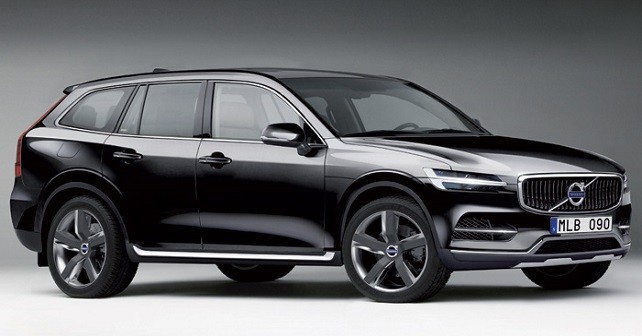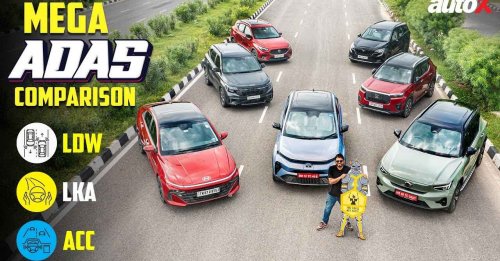Expected at Paris this autumn, the second generation of the majestic Swedish SUV will be on sale between the end of this year and early 2015 – and it has much to make its competitors fret!
Swedish brand Volvo is a former subsidiary of American giant Ford. It’s now in Chinese hands (Geely), and it’s about to launch a new model of its Volvo XC90 SUV that will showcase a new platform, new engines, revised styling, updated driving assistance devices, and next-gen connectivity options – essentially, the entire gamut of technical innovations in a single shot.
A turnaround model
The launch date for the firm from Gothenburg is fixed for the end of this year, so the pressure is on. And this is heightened by the fact that the XC90, which has been on the market since 2002, wasn’t just the first SUV from Volvo, but it’s also their highest selling model of all time. And this is a trend that the Chinese are determined to continue. Thus far, the results indicate encouraging progress – a peak of 449,255 units sold in 2011, immediately after the acquisition – owing to a sales increase of more than 50% in China. In 2013, 427,840 units were sold. A mild increase is foreseen for the current year, while 2015 should feel the beneficial effects of the launch of the brand new XC90 – a model born from a white sheet of paper to not only ensure a definitive distancing from the American ownership of years past, but also demonstrate a home grown technical maturity.
The platform is new. The Scalable Product Architecture (SPA) will take care of all the future Volvos, with the only exception being the future V40. The entire platform is completely flexible. With the exception of the distance between the front axle and the pedals, all the other dimensions are left to the discretion of the engineers. The accountants are happy too, since it leads to economies of scale.
Safety, as always, is the focal point
The platform has been designed to permit the Swedish brand to reach its objective for 2020, which is not – as is the case for other premium brands – supremacy in the market, but that of safety. No one should lose their life or be fatally injured because of an accident in a new generation Volvo. To that effect, the XC90 will debut with numerous driving assistance systems – amongst which are emergency brakes to save pedestrians and large animals, even in the dark. There’s also a system that can ‘hook-up’ to the car ahead, thereby relieving the driver from a huge dose of traffic induced stress – and, at the same time, allow him or her to take advantage of the sophisticated connectivity options (see the box on the opposite page) without dangerous distractions. Engine wise, the SPA platform will accommodate the E-Drive engines, which, from last autumn, have started to be part of some of the brands models. These efficient and compact 2.0-litre, four cylinders engines will progressively phase out the five-cylinder engines presently in use. The XC90 will also offer an electric motor (positioned at the rear), in a plug-in hybrid.
Lastly, the SPA platform provides the ideal support for the new styling direction of the brand. The three concepts presented in rapid sequence since last September to this March (see the boxes on page 95) give very clear indications on the elements that will distinguish the upcoming Volvo’s – the T-shaped headlights, and the characteristic treatment of the tail lights, the sculpted bonnet, and the clean surfaces. Above all, as underlined by the designer, Thomas Ingenlath, the proportions are typical of premium cars. Most of all, the design is instrumental in the repositioning the brand a little higher.
TWO VARIANTS OF THE COUPÉ
The first concept of the new Volvo design was unveiled at the 2013 Frankfurt Motor Show. The Coupé Concept (top) was reworked into the XC Coupé (above), which was exhibited at Detroit earlier this year, and it provides clues to many of the characteristics of the SUV to come – the new XC90.
The signature in a T
The front end of the upcoming XC90 will see one of the prominent style elements that was seen on the concepts – the T shape that ‘highlights’ the headlights. Another trademark of the manufacturer is the L shaped shelf on the bonnet
... AND A WAGON POINTING THE WAY
At the Geneva Motor Show in March, the Estate Concept was displayed – outlining the future design to be followed by the Swedish manufacturer. In particular, we were able to see the interiors, dominated by technological innovations that will be adopted by the XC90. Also evident are echoes of the Volvo’s of the past, specifically the 1800ES of the early 60’s.
All new, even on the inside
BYE BYE BUTTONSHELLO SMARTPHONE
The Estate concept has provided an insight into the interiors of the upcoming XC90. The interiors, as seen at Geneva, will most likely not deviate much in the upcoming model (as rendered by us above). The elegant minimalism, which is typically Scandinavian, expresses itself better thanks to the substitution of most of the buttons and controls that have now been integrated into the touchscreen. The only ones left out from the digitally managed controls are the volume controls, the play/pause functions of the stereo, some of the basic controls for the air vents of the air-conditioning, and the hazard lights switch. The touchscreen also serves as the interface for dialogue with an iPhone, thanks to Apple’s CarPlay software. The system syncs with the latest generation Apple smartphones (5 and above), and provides with the possibility of controlling individual apps with voice commands, or via controls on the steering wheel.
Uprightness
Similar to the ones showcased in the Estate concept, the rear lights of the XC90 will maintain the vertical structure that’s characterizes the ones in the current range
© Riproduzione riservata



































Write your Comment